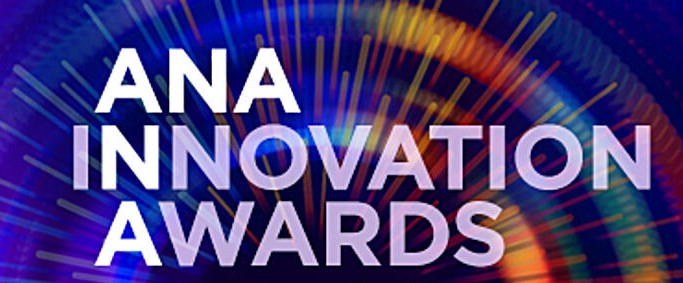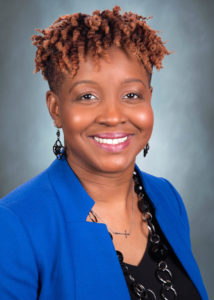When KaSheta Jackson, DNP, RN, received a phone call telling her that she had won the Individual Nurse Award, one of the American Nurses Association’s (ANA) Innovation Awards, sponsored by Stryker, she says that she was speechless and shocked.
Jackson, who is the Vice President of Health Equity and Social Impact for Vidant Health in Greenville, North Carolina, says that she didn’t expect to win. “I knew the chance of winning was slim, but at least we would receive feedback to make this innovation better in the future. The feedback would help us improve the Community Pop-ups, [and] that was worth the submission.”
We interviewed Jackson about her program—what it is, who it has helped, and more.
When, why, and how did you develop “Community Pop-Ups: A Rural Approach.” When was the program actually implemented? Do you know how many people it has helped?
Our innovation started as a means to provide basic education and vaccinations in communities with low trust and hesitancy during the COVID-19 pandemic. The first Community Pop-up started April 24 in Dream Park. Team members and leaders from different organization/agencies provided services in non-traditional locations. We emphasized “unity” in the naming for events due to the goal of strengthening partnerships and reducing historical anxieties.
It’s hard to give exact numbers of how many people we have helped, but we know they provided care to more than 400 community participants, gave away 500 produce boxes, and delivered 500 health passports in rural locations across Eastern North Carolina. We collaborated with a local wireless company to offer free cellphones for eligible participants, with public assistance programs, like Medicaid or Supplemental Nutrition Assistance Program (SNAP).
What is a health passport?
In July, Vidant launched a campaign called “Get your health back on track.” This campaign focuses on providing participants health care passports that showed age-specific/gender-specific screening schedules such as cervical cancer, mammograms, and colorectal cancer screening. The campaign provided a booklet with a checklist of all screenings by age and gender, as well as how to access MyChart and virtual health care visits. The health care visit app called VidantNOW offered primary care through the telemedicine capabilities free of charge. These booklets were provided at the Community Pop-ups along with matching tee shirts.
How does this program work? What groups of people are helped? Why kind of care do they get? Do they make appointments or just drop in? Please explain.
The Community Pop-up clinic occurs by community request and/or data assessment to create healthier communities through increasing access to health care, providing jobs, removing barriers, and addressing social, economic, and environmental factors. Participants can see a health care professional and get tests such as blood pressure and glucose monitoring, as well as information on advanced care planning, organ donation, and Mental Health resources, Covid vaccines, Covid testing, sign-up for health benefits, and employment opportunities are available also. No appointments needed. We use social media and both formal and informal leaders to spread the information. Our Pop-ups are helping individuals in rural Eastern North Carolina.
Why do you think that this model is important? How does it benefit the communities it serves in ways that other programs can’t?
This model is important due to limited resources (transportation, food, medical services, and other health resources) throughout the United States. The impact our innovation had on outcomes, safety, quality, experience of patients and staff were redefining relationships with formal and informal community leaders, reestablishing our stance as community partners, listening to concerns, and instilling pride in care team.
We met with community and faith leaders to understand what was needed in their communities. Rural residents often encounter barriers to health care that limit their ability to obtain sufficient access, so they historically have trust issues with health care. Having support from the community leaders encouraged more innovation efforts to focus on more than just health care. We understood education was essential hence seeking community colleges to partner at Community to showcase their programs. By collaborating with community leaders, providing resources they deem as valuable, and collaborating with other agencies who also have needed resources, we are addressing access through local channels and building trust as well as community ownership, which creates a generational standard for better quality of life.
In addition to coming up with the program, did you participate in it?
This program was a hands-on program. I participated in every event except one over the 6-month period. From planning, designing, and coordinating, I was involved in every detail—but never alone in the planning. I was fortunate to have amazing peers who became dear friends to partner with like Shantell Cheek MAEd, RN, Director of Uninsured Programs, and Koai Martin, MHA, Administrative Resident, just to name a couple.
What was your favorite part about this whole experience? How was it to see that a program you developed ended up helping so many people?
My favorite part of the whole experience is seeing the Community Pop-ups come together. It’s humbling and magical.
Anything else?
Our innovation has empowered many nurses to think and behave differently with regards to changing health care delivery and where care is delivered. By aligning community and the health care system, we are addressing social, economic, equity, and population health—which will be a win-win for all involved.
- What an MSN Can Do for You - October 18, 2023
- The National League for Nursing: Connecting the Academic and Clinical Worlds for 130 Years - August 16, 2023
- Treating Burnout, Trauma, and Grief with Dance - July 14, 2023




